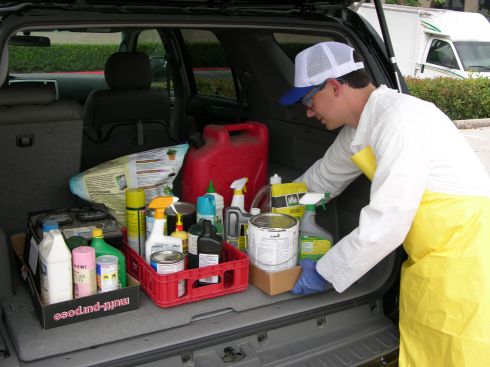How to transport hazardous waste (VSQGs only)

Very small quantity generators (VSQGs) may transport their hazardous waste to Ramsey County’s VSQG Collection Program given they follow transportation guidelines.
Here’s a quick guide:
Before following the steps below, see if you qualify for the “Materials of Trade” exception, which means you’d have reduced transport requirements.
You may qualify if you:
- Only transport your own hazardous waste.
- Only transport waste from your site to a VSQG program.
- Only transport limited amounts of hazardous waste.
Check if you qualify for the Materials of Trade exception
If you don’t qualify for the Materials of Trade exception, follow these transportation guidelines.
- Make sure you are eligible to use Ramsey County’s VSQG Collection Program (i.e., you are a VSQG or have a one-time generator license).
- Train employees with hazardous waste transportation duties and keep records. Consider using the U.S. Department of Transportation’s training module.
- Classify each hazardous waste by determining the following: DOT shipping name, DOT hazard class/division, DOT packing group, United Nations/North American hazardous material identification number, technical names and reportable quantity references. More information (page 3).
- Package hazardous waste into containers that are in good condition, can be closed and are compatible with the waste.
- Mark and label containers. Mark each container according to Hazardous Materials Regulations (HMR) code. Label each container with the appropriate DOT hazard label.
- Prep a shipping paper and keep a copy in your vehicle during transport and at your business for at least three years.
- Carry emergency response info. A simple way to meet this requirement is to attach a photocopy from the DOT Emergency Response Guidebook to your shipping paper.
- Put a placard on the vehicle, if required. Placards are required when transporting hazardous waste above a certain threshold. Check to see if you need a placard (page 3).
- Separate incompatible containers in your vehicle. Make sure you know what wastes to keep apart.
For more detailed transportation guidelines, refer to the Minnesota Pollution Control Agency’s fact sheet.
Help available
We realize there are a lot of steps and regulations to follow. Your hazardous waste inspector is available to help if needed.